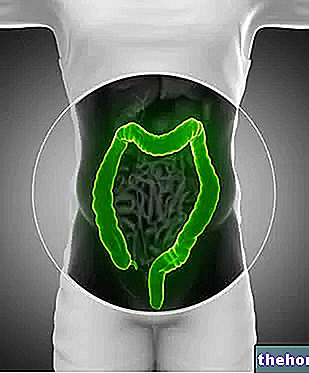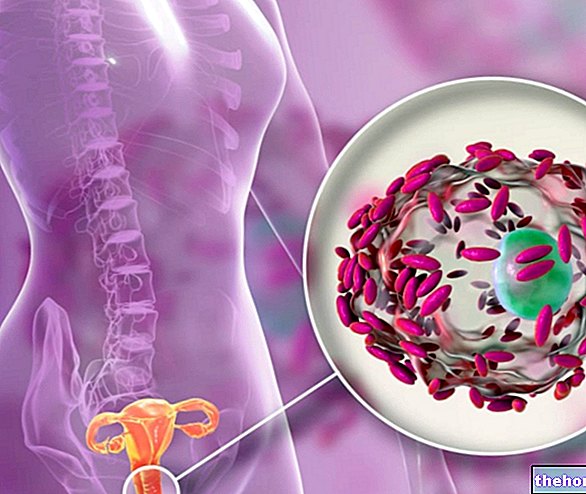
Having high triglycerides significantly increases the risk of heart attack, but its statistical importance has not yet been completely differentiated from that of "hypercholesterolemia (high cholesterol), which is often (but not necessarily) accompanied. Ultimately," hypertriglyceridemia is a dyslipidemia that favors the event of acute ischemic heart disease, due to:
- REDUCTION OF FIBRINOLYTIC EFFICIENCY (increase in blood clotting potential)
- PREPARATION FOR THROMBOSIS
- DIRECT CORRELATION WITH LDL HYPERCHOLESTEROLEMIA
- DIRECT CORRELATION WITH REDUCTION OF HDL CHOLESTEROL
Drug therapy for high triglycerides (fibrates, gemfibrozil) significantly decreases the risk of unfortunate events, confirming what the aforementioned statistical correlation between cardio-ischemic events and high triglycerides suggests.
and impaired glucose tolerance, which contribute to increased coronary and acute pancreatitis risk.On the contrary, the secondary increase in blood triglycerides, INDEPENDENT from the genetic heritage, is determined by one or more environmental, behavioral and associated comorbid factors:
- Food abuse and obesity: alcohol abuse, unbalanced diet (excess of carbohydrates, especially simple carbohydrates) and poorly distributed meals (meals that are too abundant)
- Inadequately treated diabetes mellitus
- Nephrotic syndrome
- Kidney failure
- Taking corticosteroid and estrogen drugs
The caloric excess, above all deriving from sugars, causes an excessive rise in blood glucose; this hyperglycemia, which consequently induces hyperinsulinemia (excess of INSULIN), in the sedentary subject (and especially in the obese and / or insulin resistant) favors the INCORRECT metabolization of nutrients, which (due to the anabolic and lipogenic effect of insulin) undergo inexorably the conversion into fatty acids;
in practice, it is possible to affirm that the alimentary abuse is correlated to the hyperglycemia, consequently to the hyperinsulinemia, and favors the synthesis of fatty acids causing the onset of high triglycerides in the plasma.
Furthermore, we remind you that ethyl alcohol, although NOT a nutrient as it is NOT directly involved in energy production, provides 7kcal per gram; it contributes to the caloric amount of the meal, determines an insulin stimulus comparable to that of simple carbohydrates and for to be metabolized MUST undergo biochemical conversion to fatty acids.
It is clear that ALSO alcohol abuse contributes significantly to the increase in blood triglycerides.
They also exist nutrients useful for the reduction of blood triglycerides; this is the case of the essential omega-3 fatty acids, namely alpha linolenic acid (18: 3 ALA), eicosapentaenoic acid (20: 5 EPA) and docosahexaenoic acid (22: 6 DHA). are above all: oily fish (herring, sardine, mackerel, lanzardo, sardinia, garfish, bonito, tuna, anchovy, salmon, "cod" etc.) and vegetable or fish oils (linseed, soy, walnut oil , black currant, rapeseed, etc.; cod liver oil). EPA and DHA perform numerous useful functions for the prevention of coronary heart disease; among these we remember a DIRECT effect on
- REDUCTION: blood triglycerides, hepatic synthesis of VLDL, blood density, blood pressure, fibrinogenemia, platelet aggregation potential;
- INCREASE in HDL (?);
- ENHANCEMENT of fibrinolysis;
- INHIBITION of the synthesis of PDGFc (determining factor in the pathogenesis of atherosclerosis).
The essential fatty acids of the omega3 family are fundamental in the dietary treatment of high triglycerides and in the reduction of associated complications and comorbidities.
In parallel, the defect of dietary fiber (especially soluble) can aggravate the condition of high triglycerides in the blood; it is able to modulate the absorption of nutrients, favoring the attenuation of the glycemic curve and reducing lipogenesis; therefore, guaranteeing a share of fiber equal to 30g per day is an excellent precaution for the reduction of blood triglycerides.
Ultimately, the recommendations for preventing and treating high triglycerides are:
- Avoid consumption or excess of sweet foods, sugary drinks and alcoholic beverages
- Avoid excessive portions of foods with a prevalence of carbohydrates: pasta, bread, rice, polenta, and all other cereals with their respective derivatives
- Divide your daily calories into at least 5 meals a day, and avoid consuming portions that are generally too large
- Promote the consumption of foods containing essential fatty acids of the omega3 family, in particular DHA and EPA
- Promote the achievement of dietary fiber content (about 30g / day)
- Promote physical exercise ESPECIALLY at the post-prandial glycemic peak (walking or cycling after 120 "-150" from the meal).
Bibliography:
- Treatise on clinical and surgical therapy. Volume I - F. Mazzeo - Piccin - page 318
- Branwvald's Heart Diseases. Treatise on cardiovascular medicine. Volume I - D. P. Zipes, P. Libby, R. O. Bonow, E. Brawnvald - Elsevier Masson - page 1031
- Post heart attack and associated pathologies. Volume I - A. Zangara - Piccin - page 73
- Medical reasoned therapy - A. Zangara - Piccin - page 599
















.jpg)











